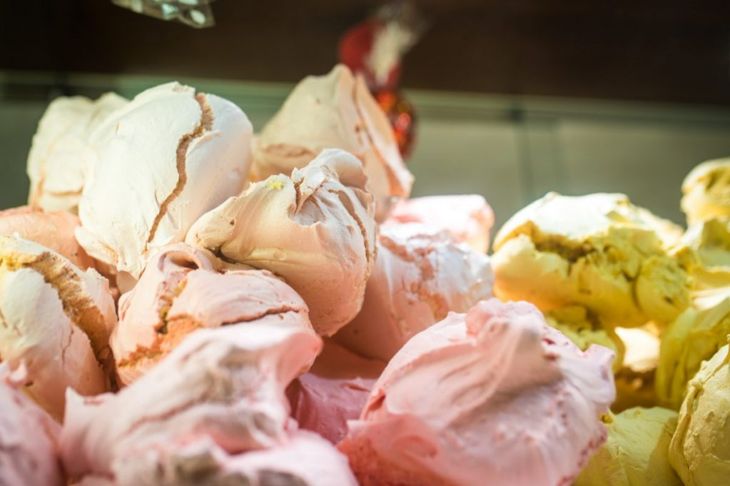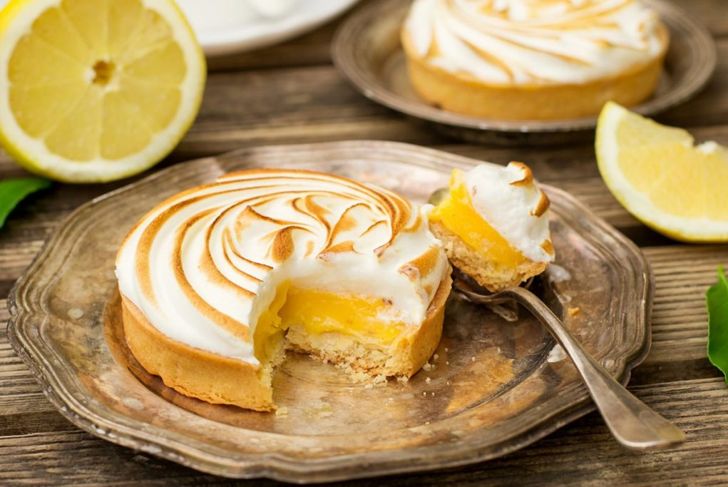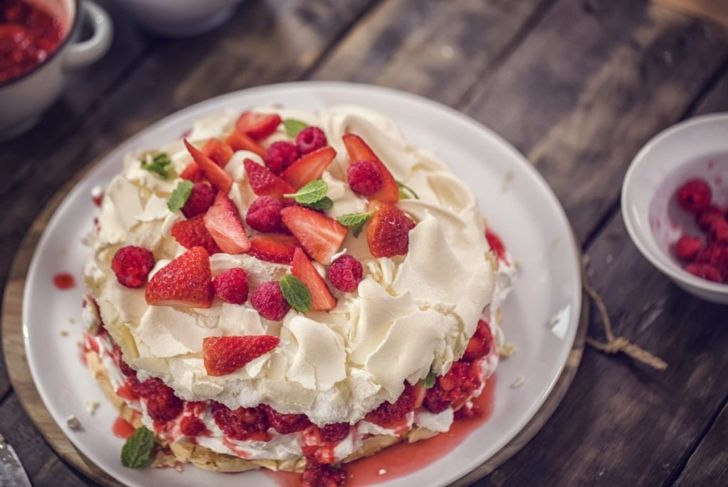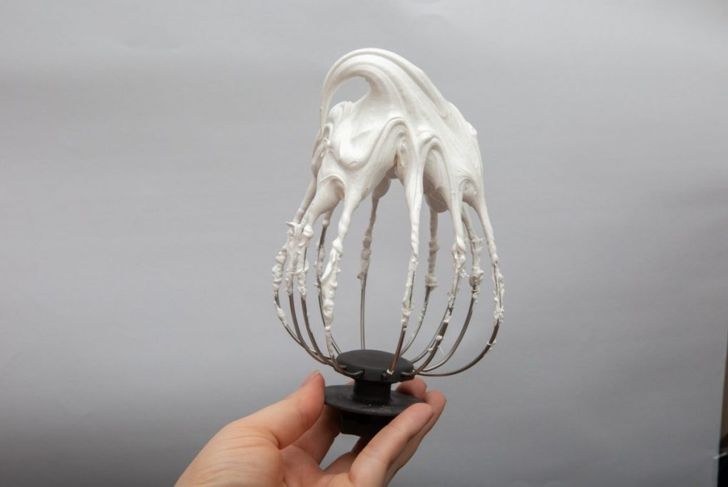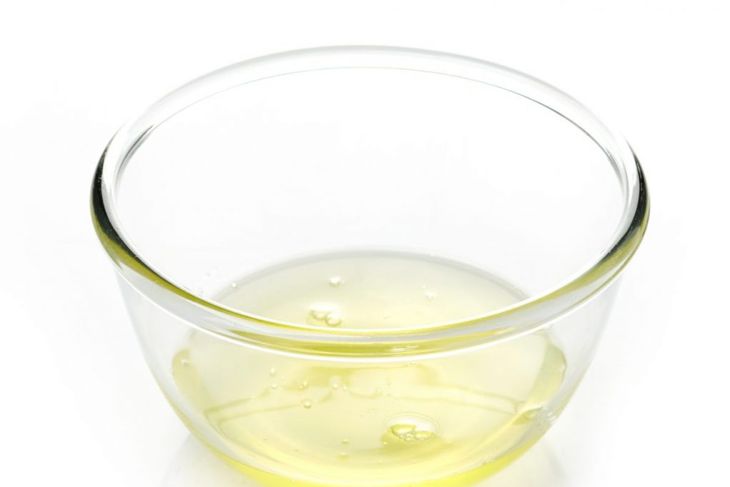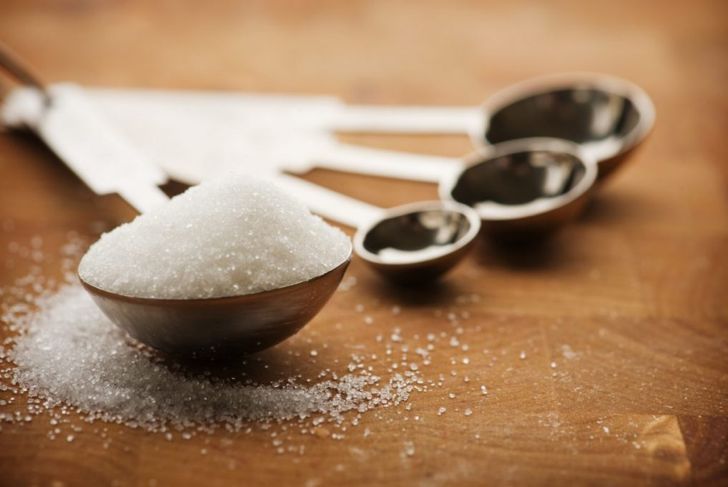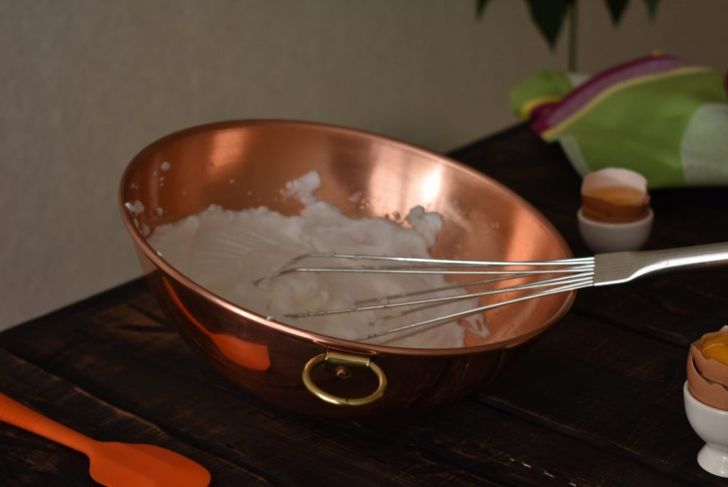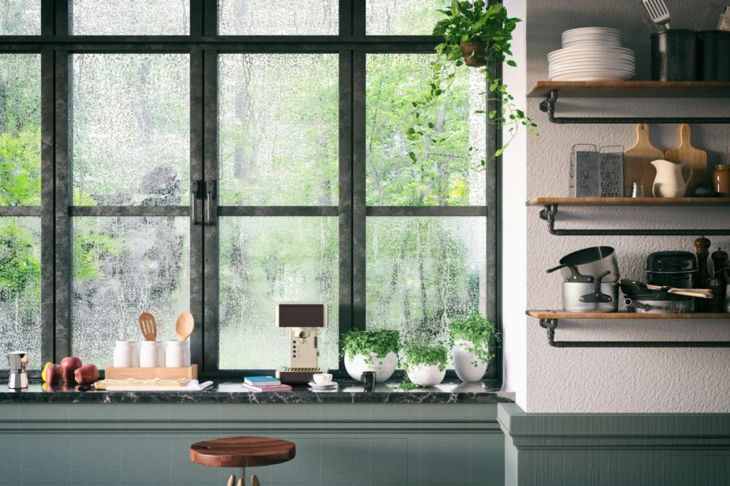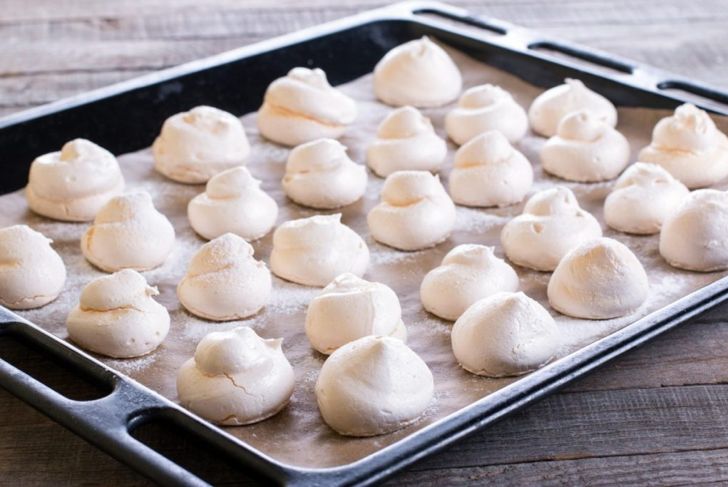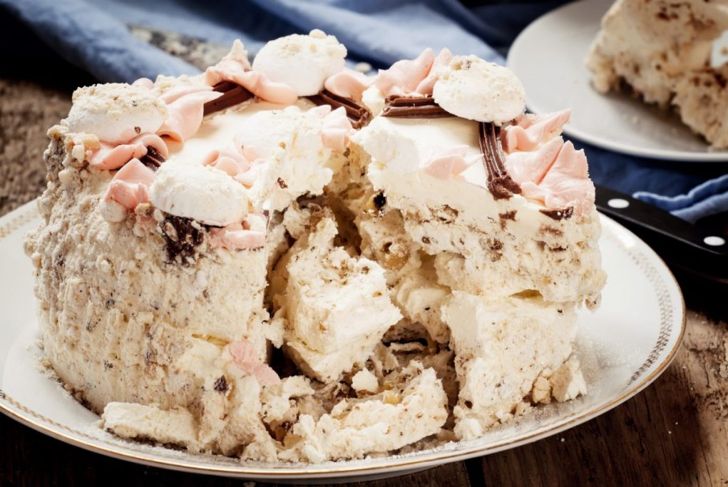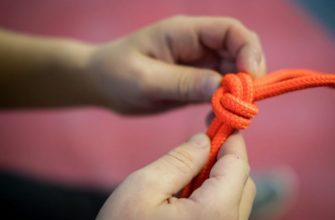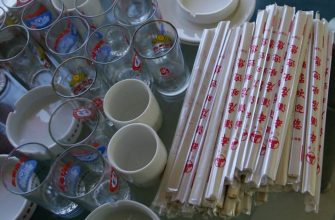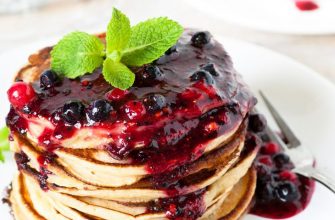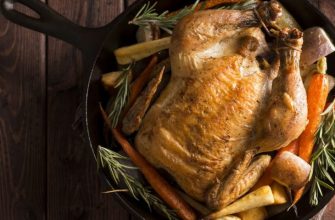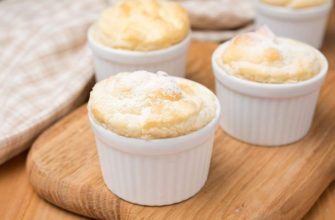Meringue is a fascinating, yet fairly simple ingredient for a wide array of desserts and confections. A Swiss pastry chef named Gasparini invented this sweet, fluffy concoction of beaten egg whites and sugar in the early 1700s. Generations of bakers have added billowy meringues on top of sweet, creamy pie fillings. Chefs bake them into firm, crisp shapes to encase fruit or whip up a creamy version to lighten a souffle or mousse recipe. By following some basic tips and learning a few tricks, any cook can create a beautiful, delicious meringue.
Three Types of Meringue
There are three types of meringue originating from three different European traditions. The most common type is a French meringue. Bakers add this uncooked version to soufflés. Although it is the least stable of the three, it is the lightest version. Swiss meringue is the firmest type of meringue and a popular choice for cooks who are creating crisp meringue cake layers or pie toppings. Italian meringue is the most stable of the three types of meringues. Many chefs prefer to use Italian meringue in desserts such as buttercreams and mousses.
Soft Meringue Recipe
French meringue is a soft meringue usually added to unbaked recipes. Choose pasteurized eggs when gathering ingredients. Create a soft, creamy topping for a lemon meringue pie. Or add this soft meringue to create fluffier souffles, puddings, sponge cakes, mousse, or Baked Alaska. Beat three egg whites with ¼ teaspoon of cream of tartar until foamy. Once the soft peaks begin to form, slowly add six tablespoons of sugar, one tablespoon at a time. The meringue shouldn’t feel grainy. Once the egg-white mixture forms stiff peaks, add a ½ teaspoon of vanilla and fold in gently.
Stiff Meringue Recipe
A harder, stiffer meringue works better for cookies and recipes such as pavlova, a cake topped with fruit and whipped cream, that is crisp on the outside and soft inside. In a large bowl, add ¼ teaspoon of cream of tartar to two egg whites. If you don’t have the cream of tartar on hand, substitute ½ teaspoon of lemon juice. Mix with a handheld whisk or use a stand or hand mixer on medium speed, but don’t overbeat. Stop beating when the egg whites become foamy. Add ½ cup of sugar, one tablespoon at a time. Beat until you see stiff glossy peaks form. To test the consistency, tilt the bowl. The whites shouldn’t move. The sugar should be completely dissolved, or the mixture will feel grainy.
Soft Peaks, Firm Peaks, and Stiff Peaks
Most meringue recipes instruct you to beat the egg whites until they form soft peaks, firm peaks, or stiff peaks. To check the progress and consistency of the meringue, stop beating and remove the whisk from the meringue. Turn it upside down with some of the meringue still on the end of the whisk. If the meringue flops over to one side, you have reached the soft peak stage. Firm peaks form if you continue to beat the egg whites. They have more structure and the tip of the meringue curves to one side when you pull the beater out of the bowl and turn it upside down. The last stage is stiff peaks. The tip of the meringue stands straight up on the end of the whisk.
The Science Behind Meringue Ingredients
The secret to creating any type of meringue is using basic scientific principles. Not only is the ratio of egg whites to sugar important, but adding the sugar at the right time is crucial and affects the meringue’s stability. You’ll be happier with the results if you add the sugar and egg whites together at specific times, as per the recipe. Create the airiness by whipping the egg whites for at least one minute, allowing them to reach a foamy appearance, before adding the sugar. Remember to add sugar slowly to the egg whites, a small amount at a time, for best results.
Ingredient Specifics
When preparing meringues, choose superfine sugar if available. It dissolves more easily than regular granulated sugar. Some bakers combine superfine with powdered sugar for the best results. Separate egg whites from their yolks when the eggs are cold. However, wait until the egg whites are at room temperature before beating them. Meringue recipes may call for an acidic ingredient such as vinegar, cream of tartar, or lemon juice. These ingredients create a more stable meringue and prevent it from deflating.
Equipment
Prepare the meringue in a clean, dry, glass, ceramic, or stainless steel bowl, free of any traces of detergent or oily residue. Avoid plastic bowls. They hold traces of oil which can ruin the meringue. A number of chefs prefer copper bowls because they create a more stable meringue foam with added fluffiness. They say that when the egg whites come into contact with the copper, there is a chemical reaction that occurs between the two that increases the meringue’s stability. Be sure to first clean the copper bowl with salt and lemon juice or vinegar, then rinse well with cool water and dry thoroughly for best results. Make sure beaters, whisks, and spoons are clean and dry.
Check the Weather
Choose a day with low humidity levels to prepare your meringue. Humidity may cause weeping, which is when the meringue releases droplets of liquid that form a clear liquid below the crust. If your kitchen is too humid, your meringue will not set up as it should. The sugar in the egg white mixture absorbs the moisture in the air. This excessive moisture prevents the stiff peaks needed for a successful meringue. If you pull a crispy, baked meringue out of the oven into a moisture-filled room, it will soften. Meringues perform best in dry-air conditions.
Baking Meringues
If you plan to bake your meringue, it’s better to get it into a preheated oven quickly once the stiff glossy peaks appear. For a meringue pie, spread the meringue over the filling while the filling is still warm. This helps seal the meringue to the filling. Make sure to also seal the meringue to the edges of the pie crust, or it will shrink when placed in the oven. Baking the pie for about 12 minutes will not only stabilize the meringue but will enhance both the flavor and the presentation.
Common Issues with Meringue
In addition to weeping, other issues may occur with meringue.
- Baked meringues will crack if they cool too quickly. The best way to avoid this issue is to turn off the oven, but leave the meringue inside. This way, the meringue cools off slowly.
- Soft meringues sometimes collapse. This means the preparer beat the egg whites too quickly. Always use a low mixer speed to start and don’t increase the speed until the egg whites are foamy. If the recipe calls for higher speeds, slowly increase the speed.
- Older egg whites don’t hold air bubbles as well as fresh ones do. But if the egg is too fresh, it won’t produce the desired fluffiness. Place the egg in a glass of water. If it stands on its end, it’s the perfect freshness level for meringue.

 Home
Home Health
Health Diet & Nutrition
Diet & Nutrition Living Well
Living Well More
More